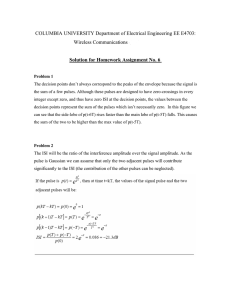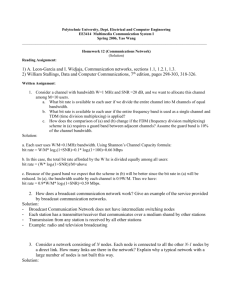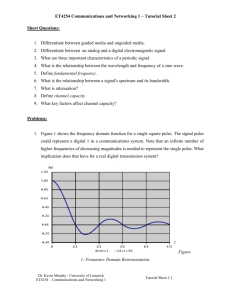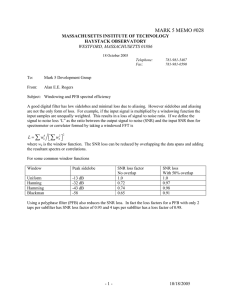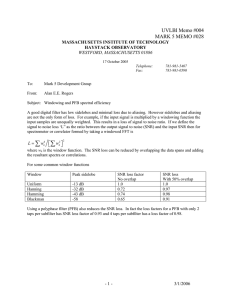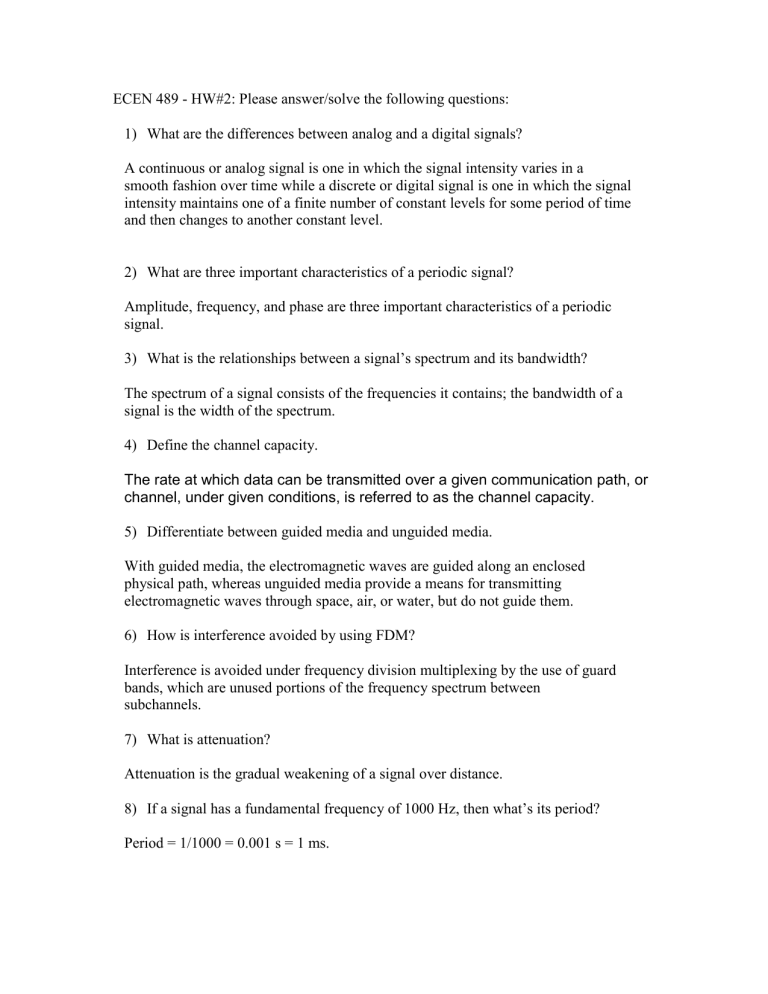
ECEN 489 - HW#2: Please answer/solve the following questions: 1) What are the differences between analog and a digital signals? A continuous or analog signal is one in which the signal intensity varies in a smooth fashion over time while a discrete or digital signal is one in which the signal intensity maintains one of a finite number of constant levels for some period of time and then changes to another constant level. 2) What are three important characteristics of a periodic signal? Amplitude, frequency, and phase are three important characteristics of a periodic signal. 3) What is the relationships between a signal’s spectrum and its bandwidth? The spectrum of a signal consists of the frequencies it contains; the bandwidth of a signal is the width of the spectrum. 4) Define the channel capacity. The rate at which data can be transmitted over a given communication path, or channel, under given conditions, is referred to as the channel capacity. 5) Differentiate between guided media and unguided media. With guided media, the electromagnetic waves are guided along an enclosed physical path, whereas unguided media provide a means for transmitting electromagnetic waves through space, air, or water, but do not guide them. 6) How is interference avoided by using FDM? Interference is avoided under frequency division multiplexing by the use of guard bands, which are unused portions of the frequency spectrum between subchannels. 7) What is attenuation? Attenuation is the gradual weakening of a signal over distance. 8) If a signal has a fundamental frequency of 1000 Hz, then what’s its period? Period = 1/1000 = 0.001 s = 1 ms. 9) What is the channel capacity for a teleprinter channel with a 300 Hz bandwidth and a signal-to-noise ratio of 3 dB? Using Shannon's equation: C = B log2 (1 + SNR) We have W = 300 Hz (SNR)dB = 3 0.3 Therefore, SNR = 10 C = 300 log2 (1 + 100.3) = 300 log2 (2.995) = 474 bps 10) A digital signaling system is required to operate at 9600 bps. a) If a signal element encodes a 4-bit word, what is the minimum required bandwidth for the channel? b) Repeat a) for the case of 8-bit words. Using Nyquist's equation: C = 2B log2M We have C = 9600 bps a. log2M = 4, because a signal element encodes a 4-bit word Therefore, C = 9600 = 2B x 4, and B = 1200 Hz b. 9600 = 2B x 8, and B = 600 Hz 11) Given a channel with an intended capacity of 20 Mbps, the bandwidth of the channel is 3 MHz. What SNR is required to achieve this capacity? C = B log2 (1 + SNR) 20 x 106 = 3 x 106 x log2(1 + SNR) log2(1 + SNR) = 6.67 1 + SNR = 102 SNR = 101


